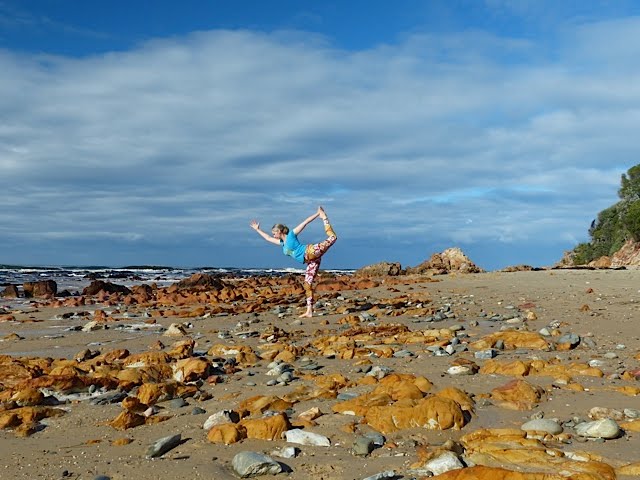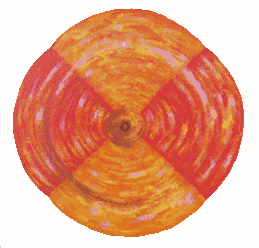The second cakra is Svadihishthana
In this week's class we explore the second cakra svadihishthana located in the pelvic basin and connected to the element is water therefore we see the second cakra as being about discovering flow or fluidity in life. I have read svadihishthana can be translated as the place of self (sva) or the favoured place. The qualities of the second cakra are our likes/dislikes, attachments/aversions, sexuality and creativity. In essence it guides our impulses or desires. Appropriately, this cakra is about taking action, setting things in motion and it is where we begin to grow our sankalpha or intention. The sacral chakra can be viewed as the emotional center for our being. It is the place where we connect to our inner feelings and tap into our creativity.
It is associated with the colour orange and is represented visually by an image of a silver crescent moon with points touching. The mantra is VAM. The gland this cakra is associated with is the adrenals. According to the Victorian Institute of Yoga Education and Teacher Training (see http:// www.viyett.com.au) fragrances for balancing thsi cakra are rosemary, rose, honey and night queen. Immm sounds good enough to eat!
The third cakra is Manipura
According to Finger (2005) this cakra is located at the solar plexus and its colour is yellow. Not surprisingly this cakra is often described as the home of your fire element and literally means 'city of gems'. This is your place of personal power. When in balance this cakra allows you to see the world clearly as the fire creates necessary heat for good metabolism, cellular activity and clarity of thought. If out of balance a person comes across as either arrogant, vain, insensitive, angers easily and unable to see others points of view or introverted, depressed unable to find clarity in thought or expression that is they don't have enough fire. The mantra is RAM and the yantra is an inverted red triangle. The gland linked with manipura is the pancreas.
According to Finger (2005) this cakra is located at the solar plexus and its colour is yellow. Not surprisingly this cakra is often described as the home of your fire element and literally means 'city of gems'. This is your place of personal power. When in balance this cakra allows you to see the world clearly as the fire creates necessary heat for good metabolism, cellular activity and clarity of thought. If out of balance a person comes across as either arrogant, vain, insensitive, angers easily and unable to see others points of view or introverted, depressed unable to find clarity in thought or expression that is they don't have enough fire. The mantra is RAM and the yantra is an inverted red triangle. The gland linked with manipura is the pancreas.




